Back acne, or “bacne” as it is commonly referred to, is a frustrating and often embarrassing condition that affects many people, particularly during their teenage years. However, it can also persist well into adulthood. To treat acne on back is difficult to treat due to the large surface area and the fact that it is often hard to reach, making it a breeding ground for bacteria. In this article, we will provide you with the ultimate guide to treating acne on the back.
Understanding Back Acne
Before we dive into how to treat acne on back, it’s important to understand what causes acne on the back. Back acne, also referred to as “bacne,” is a skin condition that affects people of all ages. It’s caused by the same factors that cause acne on the face, such as excess oil production, clogged pores, and bacteria. However, the skin on the back is thicker and has larger pores, which can make back acne more stubborn and difficult to treat.
Discover expert advice on preventing and treating acne outbreaks and scarring. Click to read!
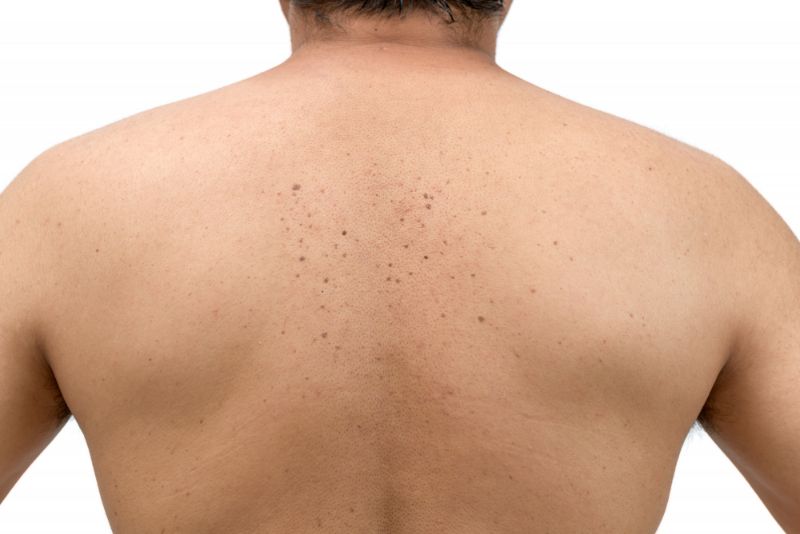
What Causes Acne on the Back?
Acne on the back is a common skin problem that affects people of all ages and genders. It can be caused by a number of circumstances, and identifying these aspects is essential in determining the best treatment for your skin.
- Excess Oil Production
Excess oil production is one of the leading causes of acne on the back. When your skin produces too much oil, it can clog your hair follicles and pores, leading to the formation of pimples and blackheads. This can be exacerbated by factors such as poor hygiene, hormonal imbalances, and certain medications.
- Dead Skin Cells
Dead skin cells can also contribute to the formation of acne on the back. When these cells accumulate on the surface of your skin, they can clog your pores and hair follicles, leading to the formation of blackheads and pimples.
- Bacteria
Another typical cause of acne on the back is bacteria. Oil and dead skin cells can clog hair follicles, allowing bacteria to proliferate and reproduce, causing inflammation and the development of pimples and cysts.
- Hormonal Changes
Hormonal changes can also contribute to the formation of acne on the back. Teenagers are particularly susceptible to acne on the back due to hormonal changes during puberty, while women who are pregnant or going through menopause may also experience hormonal imbalances that can lead to acne.
Symptoms of Back Acne
Symptoms of back acne can vary from mild to severe and can include:
- Blackheads: small, dark spots that form on the skin due to the clogging of pores with dirt, oil, and dead skin cells.
- Whiteheads: small, white bumps that form on the skin when pores become clogged with oil and dead skin cells.
- Papules: small, raised bumps that may be pink or red in color.
- Pustules: similar to papules but pus-filled.
- Nodules: sizable, discomforting protrusions that develop beneath the surface of the skin.
- Cysts: deep, pus-filled lesions that can be painful and may leave scars.
- Scarring: sometimes back acne can lead to scarring, especially if it is severe or left untreated.
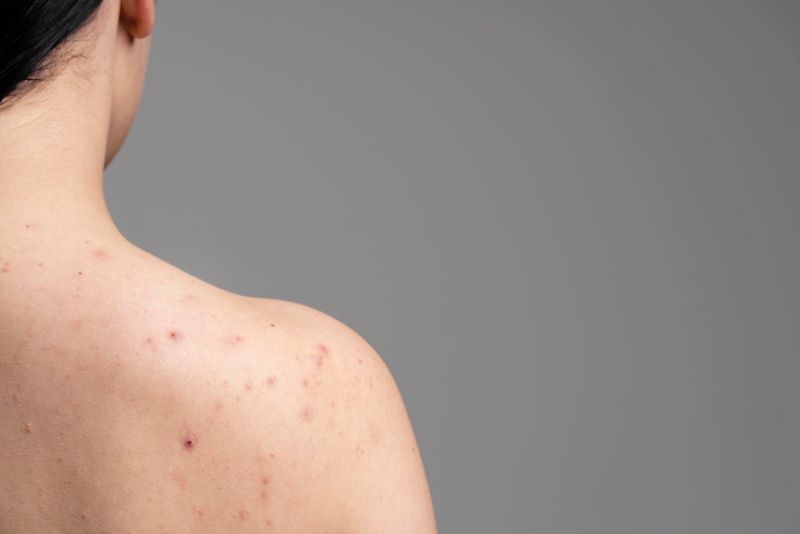
Other symptoms of back acne may include redness, swelling, and inflammation of the affected area. It is important to seek medical attention if back acne symptoms are severe or persistent.
How To Treat Acne on Back?
When it comes to treat acne on back, there are several effective options available. From over-the-counter products to prescription medications, there are a variety of treatments that can help clear up and prevent breakouts.
Topical Treatments
One of the most common treatments for acne on the back is topical treatments. These are products that are applied directly to the skin to help reduce acne.Topical treatments kill bacteria, reduce inflammation, and unclog pores. Some popular topical treatments for back acne include benzoyl peroxide, salicylic acid, and retinoids.
- Benzoyl peroxide is a topical medication that kills bacteria and reduces inflammation. It’s available in different strengths and can be found in many over-the-counter acne products.
- Salicylic acid is a beta-hydroxy acid that exfoliates and unclogs pores on the skin. It’s often found in acne cleansers and toners.
- Retinoids are vitamin A derivatives that help unclog pores and reduce inflammation. They are available in both prescription and nonprescription forms.

When using topical treatments, it’s important to be consistent and patient. It may take several weeks to see results, and some products can cause dryness or irritation. Begin with a lower strength and gradually increase as needed.
Oral Medications
In some cases, topical treatments may not be enough to treat acne on back. In these situations, oral medications may be prescribed by a dermatologist. Some common oral medications for acne on the back include:
- Antibiotics are medications that help kill bacteria and reduce inflammation. They’re often used for moderate to severe acne.
- Hormonal therapies may be recommended if hormonal changes are contributing to back acne. These can include birth control pills or spironolactone.
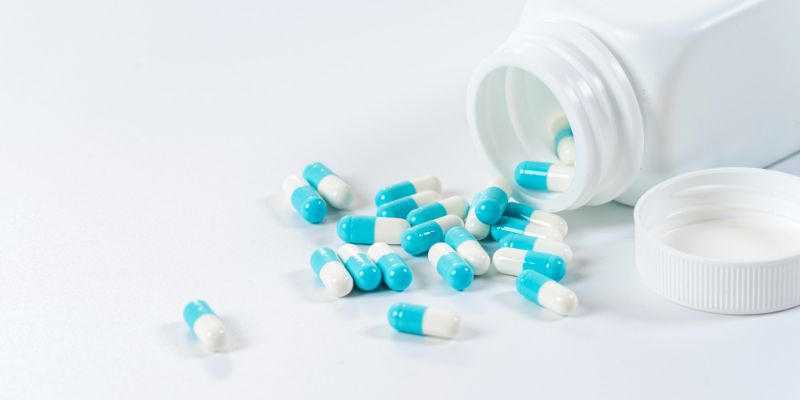
It’s important to talk to a dermatologist before starting any oral medication for acne. They can advise you on the best course of treatment based on your specific requirements. Additionally, Remotederm offers online dermatology consultation services that can be accessed from anywhere, eliminating the need for long waits to visit dermatologists in person. Seeking medical attention and following a consistent treatment plan is essential in treating and preventing back acne.

Chemical Peels
Chemical peels are an exfoliating procedure that can aid in the treatment of back acne. A solution is applied to the skin during a chemical peel, causing the top layer to peel away, revealing smoother, cleaner skin beneath. Glycolic acid peels are a frequent type of chemical peel for back acne.
- Glycolic acid peels are a type of alpha-hydroxy acid that exfoliates the skin and helps unclog pores.
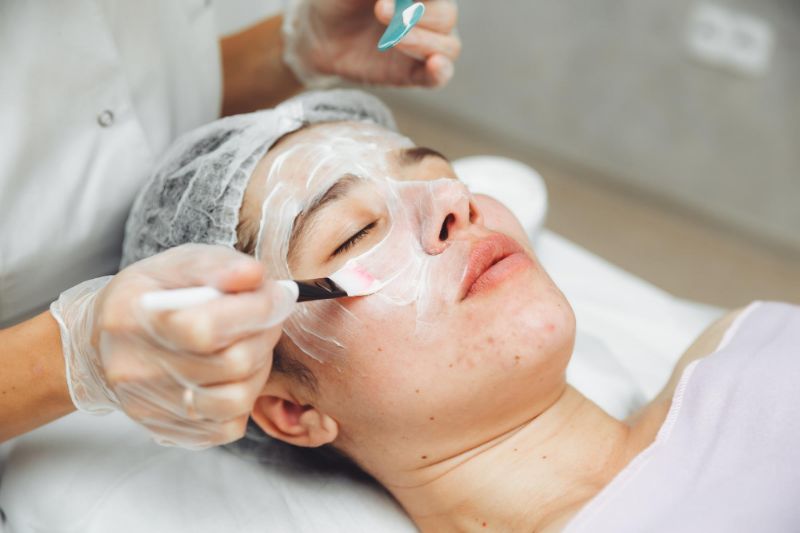
It’s important to note that chemical peels should only be done by a licensed professional, as they can cause skin damage if not done correctly. Chemical peels may also not be suitable for everyone, especially those with sensitive skin.
Natural Remedies To Treat Acne on Back
While there are several over-the-counter treatments available, some people prefer natural remedies to help clear up their back acne. Here are some H2 natural remedies for back acne:
- Tea Tree Oil: The antibacterial and anti-inflammatory qualities of tea tree oil can help lessen the appearance of back acne. After diluting the oil with a carrier oil such as coconut oil or jojoba oil, apply it to the affected area.
- Aloe Vera: Aloe vera contains healing and soothing characteristics that can help reduce inflammation and redness caused by back acne. Aloe vera gel should be administered directly to the afflicted region.
- Apple Cider Vinegar: Natural acids in apple cider vinegar can help exfoliate dead skin cells and lessen the visibility of back acne. To treat the area, use equal parts water and apple cider vinegar.
- Turmeric: Back acne can be less visible because to the anti-inflammatory and antibacterial effects of turmeric. Apply a paste made of turmeric powder and honey to the afflicted region.
- Oatmeal: The calming effects of oatmeal may assist to lessen the irritation brought on by back acne. Apply a paste made of oats and water to the afflicted area.
- Witch Hazel: As an excellent natural remedy for back acne, witch hazel has astringent qualities that can help reduce oil production and tighten pores. Utilizing a cotton ball, apply witch hazel to the affected region.
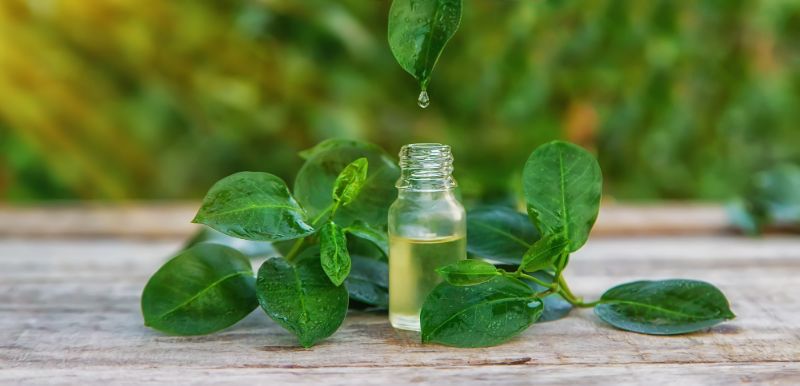
While natural remedies can be effective for treating back acne, it’s important to note that everyone’s skin is different. It’s always a good idea to test a small patch of skin before applying any new remedy to ensure that it doesn’t cause an adverse reaction. If your back acne persists or worsens, it’s best to consult a dermatologist for further treatment options.
How to Get Rid of Acne on the Back
In addition to the treatments listed above, there are several lifestyle changes you can make to help prevent and treat back acne. Here are some tips for getting rid of acne on the back:
- Wear Loose Clothing: Tight clothing can trap sweat and oil against the skin, exacerbating back acne. Choose loose-fitting clothing made of breathable fabrics instead.
- Shower After Exercise: Sweat can contribute to the growth of bacteria that cause acne. Make sure to shower after exercising to remove sweat and bacteria from the skin.
- Use Non-Comedogenic Products: Non-comedogenic products are specifically formulated not to clog pores, making them a great choice for those with back acne.
- Keep Skin Clean and Moisturized: Keeping the skin clean and moisturized can help prevent the buildup of dead skin cells and excess oil, both of which can contribute to back acne.
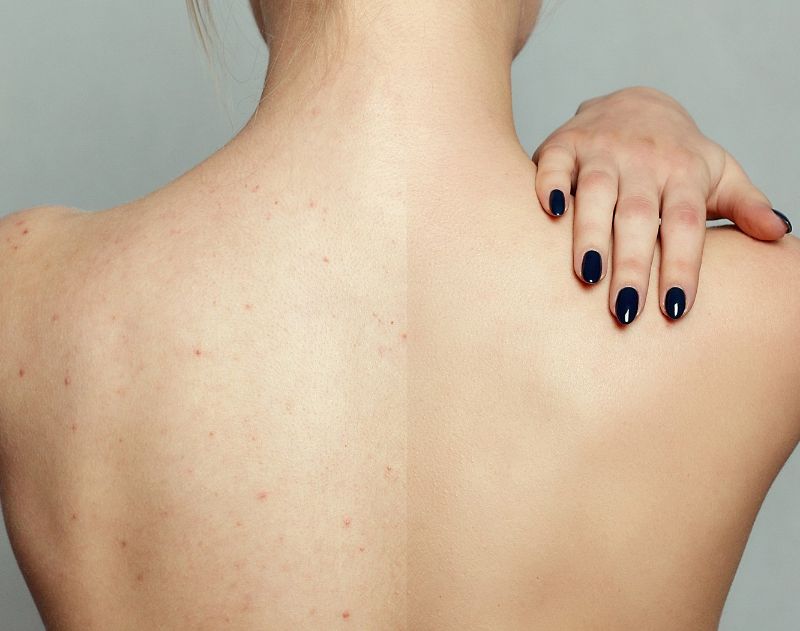
Conclusion
In conclusion, back acne, or “bacne,” is a common skin condition that can be difficult to treat due to the large surface area and the fact that it is often hard to reach. It can be caused by excess oil production, dead skin cells, bacteria, and hormonal changes. Fortunately, there are several effective methods to treat acne on back available, including topical treatments, oral medications, and chemical peels.
FAQs
- What should you do if you have severe or persistent back acne?
It is important to seek medical attention if back acne symptoms are severe or persistent. A dermatologist can help determine the best course of treatment based on your specific needs.
- Can stress cause back acne?
Yes, stress can contribute to the development of acne on the back, as stress hormones can increase oil production and inflammation in the skin.
- Is there a link between diet and back acne?
While there is no direct link between diet and back acne, some studies suggest that a diet high in refined carbohydrates and dairy products may contribute to acne in general.
- Can back acne go away on its own?
In some cases, back acne may go away on its own without treatment. However, it is often persistent and may require treatment to clear up completely.
- How often should I exfoliate my back if I have acne?
It is generally recommended to exfoliate your back once or twice a week if you have acne. Over-exfoliating can irritate the skin and make acne worse.
- Can sun exposure help clear up back acne?
While sun exposure may temporarily improve the appearance of back acne, it can also cause damage to the skin and make acne worse in the long run.
- Can shaving cause back acne?
Shaving can cause irritation and ingrown hairs on the back, which can contribute to the development of acne. It is important to use a sharp, clean razor and avoid shaving over active acne lesions.
- Can sweating worsen back acne?
Yes, sweating can worsen back acne by increasing oil production and clogging pores. It is important to shower and change into clean, dry clothes after sweating.
- How long does it take for acne treatments to start working?
It can take several weeks or even months to see results from acne treatments. It’s crucial to follow your treatment plan with patience and consistency. If you do not see improvement after several weeks, it may be time to try a different treatment.
